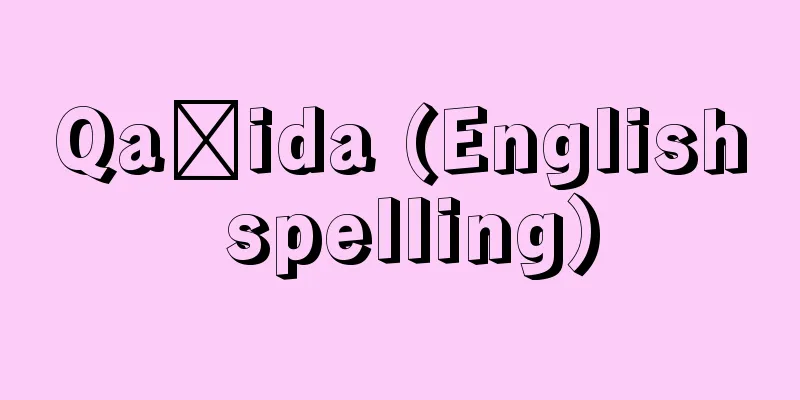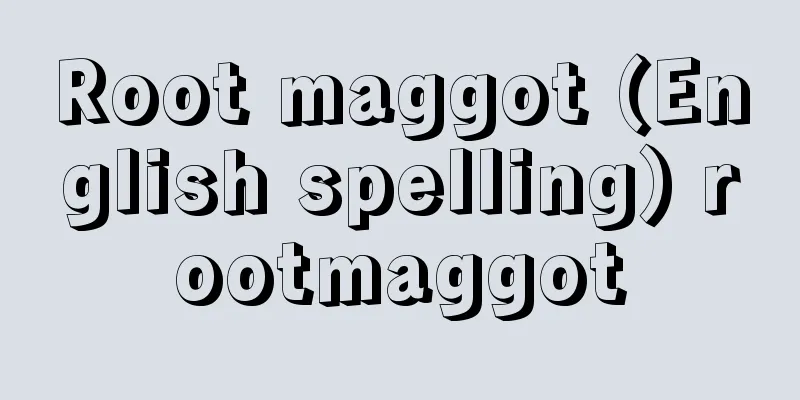Palm print - Shomon

|
A pattern formed by the ridges of the skin (skin ridges) found on the palm of the hand, also called a palm print. In rare cases, it can also mean the overall impression of the palm (hand shape). Like fingerprints, palm prints are unique to everyone and remain unchanged throughout one's life, making it possible to identify individuals, and are particularly used in criminal investigations. Skin prints, such as palm prints, are inherited traits, but the mode of inheritance has not yet been established, so they are sometimes used in parent-child testing, but are not very practical. There are ethnic differences in the appearance of skin prints, and they are used in the fields of anthropology and human genetics. In recent years, a correlation has been found between various congenital abnormalities and abnormal findings in skin prints, and clinical medicine has attempted to use skin prints to make diagnoses, and it is said that 97% of Down's syndrome can be diagnosed using skin prints. Palm patterns are classified using hoof (L), whorl (W), arch (A), vestigial (V) and other patterns, as well as tridents (Y-shaped ridges), as indicators, and are coded based on (1) the direction of the main line, (2) the position of the trident on the arm (axis), and (3) the presence and shape of patterns on the little finger eminence, the thenar eminence and the first interdigital area, the second interdigital area, the third interdigital area, and the fourth interdigital area. A list of these in the order of (1) to (3) is called a hand pattern. [Junichi Kotani] [Reference] |Source: Shogakukan Encyclopedia Nipponica About Encyclopedia Nipponica Information | Legend |
|
手のひら(手掌)にみられる皮膚の隆線(皮膚小稜(しょうりょう))によって形成される紋理をいい、手掌紋ともよばれる。まれに手掌の全体としての印象(手型)を意味することもある。掌紋は指紋と同じく万人不同、終生不変であるため、個人識別が可能であり、とくに犯罪捜査分野で実用化されている。掌紋などの皮膚紋理は遺伝形質であるが、その遺伝形式はまだ確立されていないため、親子鑑定に利用されることもあるが実用性には乏しい。紋理の出現性などには民族差があり、人類学、人類遺伝学の分野で応用されている。また近年、各種先天性異常と紋理異常所見との関連性が判明し、臨床医学でも皮膚紋理による診断が試みられており、皮膚紋理による判別でダウン症候群の97%が診断できるともいわれる。 掌紋は蹄(てい)状(L)、渦状(W)、弓状(A)、痕跡(こんせき)(V)などの紋様と、三叉(さんさ)(Y状隆線)を指標に、(1)主線の走向、(2)腕(軸)三叉の位置、(3)小指球部、母指球部と第Ⅰ指間部、第Ⅱ指間部、第Ⅲ指間部および第Ⅳ指間部の紋様の有無・形態、を検査し、分類記号化する。それを(1)~(3)の順に列記したものを手式という。 [小谷淳一] [参照項目] |出典 小学館 日本大百科全書(ニッポニカ)日本大百科全書(ニッポニカ)について 情報 | 凡例 |
Recommend
Geschwind, N. (English spelling) GeschwindN
... Regarding the difference in the functions of ...
Salmonella abortusequi (English name)
Salmonella abortus is a common disease caused by ...
Scapellum rubrum (English spelling) Scapellumrubrum
…[Shigeo Gamou]. … *Some of the terminology that ...
Postmenopausal bleeding
...In order to diagnose the above-mentioned under...
U Thong (English spelling)
An ancient ruin in central-western Thailand. Locat...
Toseimonteidokuginnijikkasen - Twenty Immortal Poets
A collection of renku haikai poems. Compiled by To...
Clot retraction test
When normal blood leaves a blood vessel, it solidi...
Yakatabune (houseboat)
A boat with a yakata (a house-shaped cover) attac...
Murder in the Cathedral
A verse drama by the British poet and critic TS El...
Vingboons
...the latter, hailed as the "Eighth Wonder ...
Land Survey
...Examples include surveys for setting triangula...
Devic's disease
... Acute cases often become acute transverse mye...
Autumn leaf viewing - Momijigari
[1] Visiting the mountains and fields to view autu...
Shunputei Ryushi
A stage name of a Rakugo performer. (1) The first ...
Prince Kuni
One of the titles of the former Imperial family. I...









